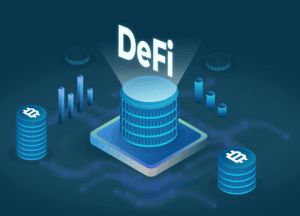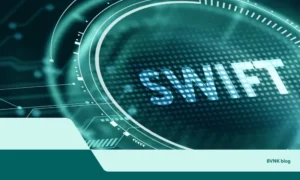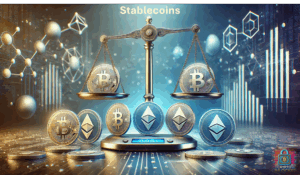The financial world is at a crossroads. On one side stands traditional finance (TradFi), the centuries-old system of banks, governments, and regulated institutions that manage the world’s money. On the other side is decentralized finance (DeFi)—a new wave of blockchain-powered innovation challenging the very foundation of how we borrow, lend, invest, and transact.
The question is no longer whether DeFi matters, but rather: can it truly compete with the established financial giants—and if so, who will win?
The Legacy of Traditional Finance
For generations, traditional finance has been the backbone of the global economy. Banks, stock exchanges, and regulatory bodies have built a structure that facilitates everything from credit cards and mortgages to corporate financing and global trade.
Strengths of Traditional Finance
- Trust and Stability – Banks and institutions are regulated, insured, and backed by governments.
- Accessibility (to an extent) – Most people worldwide can open bank accounts, access loans, or transfer money—albeit sometimes at high cost.
- Established Infrastructure – ATMs, credit systems, and global payment networks like SWIFT ensure liquidity and reliability.
Yet, traditional finance is also criticized for being slow, expensive, and exclusionary. Millions of people, especially in developing countries, remain unbanked or underbanked. And for those inside the system, hidden fees, lengthy settlement times, and lack of transparency are daily frustrations.
The Rise of DeFi: A Financial Revolution
Decentralized finance emerged from the promise of blockchain technology—removing intermediaries and replacing them with smart contracts that execute transactions automatically. Instead of trusting a bank, you trust code.
Strengths of DeFi
- Borderless and Inclusive – Anyone with an internet connection and crypto wallet can participate.
- Transparency – All transactions are visible on the blockchain, reducing hidden costs and manipulation.
- Higher Yield Opportunities – Staking, yield farming, and lending protocols often offer returns far greater than traditional banks.
- Innovation Speed – DeFi evolves at lightning pace, introducing new financial products almost monthly.
Still, DeFi is young and unpolished. Smart contract risks, lack of regulation, and extreme volatility make it risky for everyday users.
Head-to-Head: Key Comparisons
1. Trust vs. Trustless
- Traditional Finance: Relies on trust in institutions, regulators, and governments.
- DeFi: Relies on trust in blockchain technology and code.
2. Accessibility
- Traditional Finance: Accessible in developed countries, but excludes millions globally due to infrastructure, credit history requirements, or government restrictions.
- DeFi: Global, open 24/7, with no credit checks or permission needed.
3. Cost and Speed
- Traditional Finance: High fees for cross-border transfers, with settlements sometimes taking days.
- DeFi: Transactions often clear in seconds to minutes, though network congestion can raise fees.
4. Innovation vs. Regulation
- Traditional Finance: Slow-moving but highly regulated, offering legal protection and insurance.
- DeFi: Fast-moving and innovative, but largely unregulated—creating both opportunity and risk.
Where Traditional Finance Still Wins
Despite DeFi’s explosive growth, TradFi holds advantages that are hard to ignore:
- Consumer Protection – Deposit insurance and legal recourse don’t exist in DeFi.
- Mass Adoption – Billions of people already use banks, credit cards, and mobile payments daily.
- Stability in Crises – Central banks can intervene to prevent collapses, while DeFi markets often crash unchecked.
Where DeFi Has the Edge
DeFi’s strength lies in what TradFi struggles with:
- Financial Inclusion – Anyone, anywhere can access financial tools without paperwork.
- Transparency and Control – Users control their funds without banks freezing accounts.
- Programmable Money – Smart contracts enable innovations like flash loans and automated yield strategies that simply don’t exist in TradFi.
The Possibility of Convergence
Instead of a battle for dominance, many experts believe we’re heading toward a hybrid future. Already, traditional institutions are experimenting with blockchain, and central banks are developing digital currencies (CBDCs).
Imagine a world where:
- Banks use DeFi protocols for instant cross-border settlements.
- Investors seamlessly move between tokenized stocks and cryptocurrencies.
- Governments regulate DeFi platforms without stifling innovation.
This fusion of TradFi’s stability with DeFi’s innovation could be the true winner of the financial evolution.
So, Who Will Win?
Framing the debate as DeFi vs. Traditional Finance might miss the point. DeFi has already proven it can disrupt finance, but TradFi isn’t going away anytime soon. The likely outcome isn’t victory for one side, but a reshaped financial system where:
- DeFi forces TradFi to innovate.
- TradFi lends legitimacy and protection to DeFi.
- Users benefit from the best of both worlds.
Final Thoughts
The battle between DeFi and Traditional Finance is not just about money—it’s about control, access, and the future of trust. DeFi offers freedom and innovation, while TradFi offers stability and protection.
So who will win? The truth is, they both might. The future of finance will likely be a partnership between code and institutions, creating a more efficient, inclusive, and transparent system than anything we’ve known before.
And when that happens, the real winners won’t be DeFi or TradFi—it will be us, the users.










